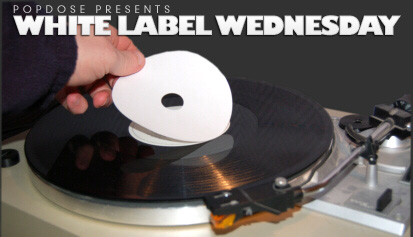
Rare is the cover version that both compliments and improves upon the original. This is one of them.
 I will not pretend to have a vast knowledge of either Quincy Jones or the Brothers Johnson. To me, Jones was the guy that produced Michael Jackson and occasionally mined Mellow Gold (am I the only one for whom Jones’ song “Just Once” and the movie “The Last American Virgin” are inseparably linked?), and, well, I had never heard of the Brothers Johnson until Jones covered them. I finally went back to hear the original version at Lord Jefito’s behest, and couldn’t believe how deliberate it was. It has a fantastic melody, but has no business slumming in the slow jam commuter lane. Jones’ version rectifies this. Recruiting Ray Charles and Chaka Khan to sing lead was gravy.
I will not pretend to have a vast knowledge of either Quincy Jones or the Brothers Johnson. To me, Jones was the guy that produced Michael Jackson and occasionally mined Mellow Gold (am I the only one for whom Jones’ song “Just Once” and the movie “The Last American Virgin” are inseparably linked?), and, well, I had never heard of the Brothers Johnson until Jones covered them. I finally went back to hear the original version at Lord Jefito’s behest, and couldn’t believe how deliberate it was. It has a fantastic melody, but has no business slumming in the slow jam commuter lane. Jones’ version rectifies this. Recruiting Ray Charles and Chaka Khan to sing lead was gravy.
On paper, the remixes for “I’ll Be Good to You” are the kind of thing I would assemble in my wildest dreams. Arthur Baker doing the remix, and Omar Santana doing the edits? (*rubs eyes*) The only way that match-up would have been cooler is if it had been on a New Order record. The actual mixes, however, were not quite as dreamy. The 12″ mix is pretty bad-ass, with Oh-Oh-Omar doing his edit thing towards the end, while Baker uses a couple of Chaka’s vocal hiccups as percussion and slyly inserts a micro-snippet of Bomb the Bass’ “Beat Dis” when no one’s looking. If only more forward-thinking people had prevailed, however, when it came to the rap segment in the break. Yes, it was standard operating procedure to add a rap to any R&B song released in late 1989 and early 1990 (see: Janet Jackson’s “Alright,” Jody Watley’s “Friends”). Now, however, those bits just sound ridiculous. If someone threw that rap out in a duel today – or even ten years ago – their competitor would be well within his rights to literally set them on fire.
As for the other mixes, their names say it all. Good for Your Soul mix? Yep, it’s got a Soul II Soul beat, which sounds really slow compared to the LP version, but is about the same speed as the Brothers Johnson original. Around the House mix? Yep, it’s a house mix. It might sound trendy to make both kinds of mixes for this song – and let’s be honest, it is trendy – but keep in mind that the ability to change the speed of a vocal without changing the pitch was a recent technological innovation when these were made. Before that, slowing down a vocal meant lowering the pitch, as our good friend Chico DeBarge showed us last month. Who can blame Baker for wanting to experiment a little, and who can blame Jones for wanting his song to cross over to as many club scenes as possible? The house mixes were right up Santana’s alley, having done similar mixes with acts like Sweet Sensation, and he even gave New Order’s “Confusion” a similar makeover a few months later. They may be putting a square peg in a round hole when it comes to doing what’s best for the song, but when it comes to how remix culture operated at the time, the house and Soul II Soul mixes make perfect sense.
As for the music video, well, it might be the sweetest, most innocent video MTV has ever shown. A bunch of couples all googly-eyed for each other, and they even had some children playing grown-up, awwwwww. And Chaka’s footage (her hair may have been at an all-time high, but I think she looks damn good here) was clearly shot somewhere else, because she does not share a single scene with either Quincy or Ray. And God, do I love those late ’80s and early ’90s urban clothes. So fancy, and yet so awful. Running man!
I’ll Be Good to You (12″ remix)
I’ll Be Good to You (Remix edit)
I’ll Be Good to You (Good for Your Soul mix)
I’ll Be Good to You (Good for Your Soul edit)
I’ll Be Good to You (Good for Your Soul dub)
I’ll Be Good to You (Around the House mix)
I’ll Be Good to You (Around the House dub)




Comments